“A dog may be man’s best friend…but the horse wrote history.”
Author Unknown
There is something majestic and fearsome about a horse charging the enemy in battle formation. The spirit of the cavalryman merging with his mighty steed is something carved in our minds and one which has come down to us through history. While the domestication of horses can be traced to about 5,500 years ago, the battle-hardened warhorse came later.
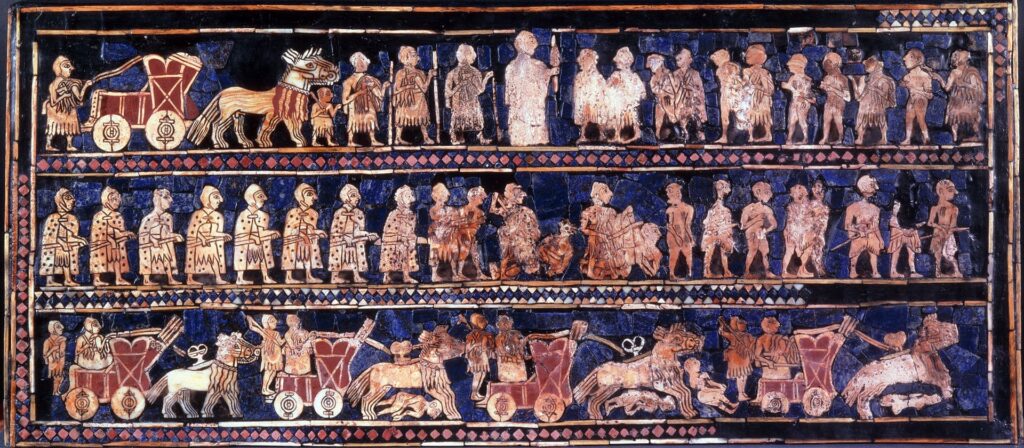
Horses and Chariots
The first recorded use of horses employed in the service of an army were found on burial goods in ancient Mesopotamia, on the Standard of Ur, in roughly 3,000 BC. They were used to pull heavy chariots framed with wood and covered with animal skins. These would primarily have been used for transportation and parade purposes, and it is not known if these would have seen actual warfare.
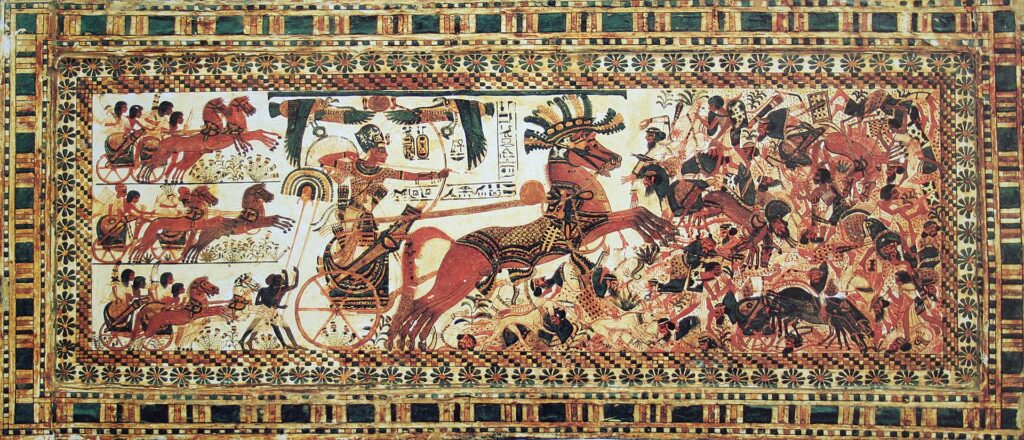
The true refiners of chariots were the Egyptians. It is possible they were used in warfare as early as the Old Kingdom (c. 2686–2181 BC), but the most advanced are seen on the walls of tombs and grave items of Pharaoh Tutankhamun.
"The Egyptians invented the yoke saddle for their chariot horses around 1500 BC. Chariots were effective for their high speed, mobility and strength which could not be matched by infantry at the time. They quickly became a powerful new weapon across the ancient Near East. The best preserved examples of Egyptian chariots are the six specimens from the tomb of Tutankhamun." *
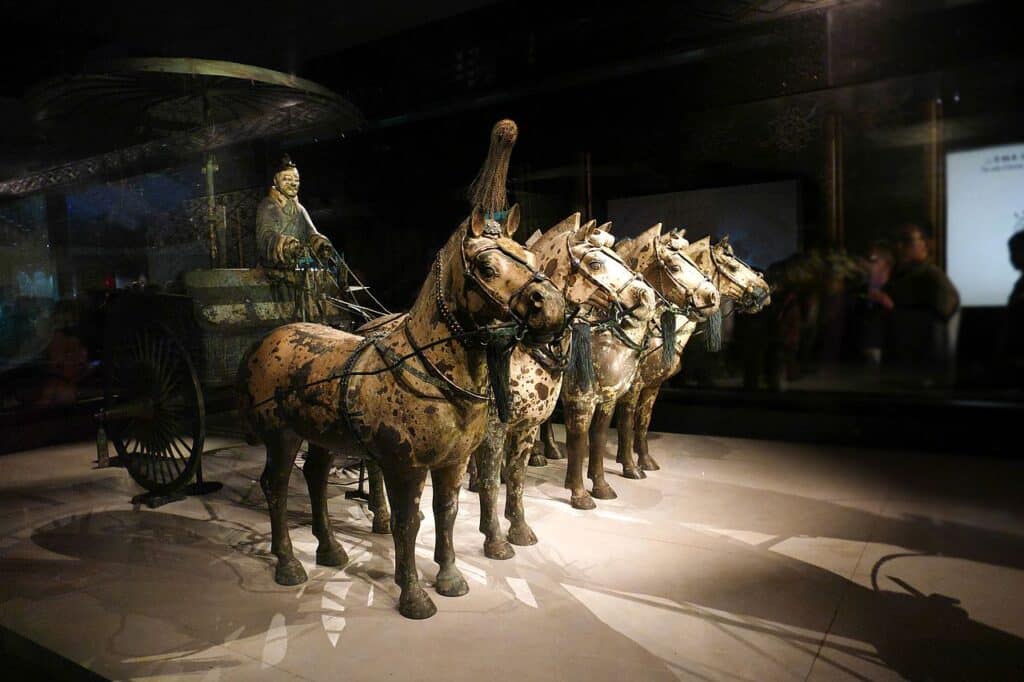
Some of the most spectacular chariots are those found in the tomb of the first Chinese Emperor, Qin Shi Huang. His terracotta army boasts of "bronze chariots and horses whose sizes are about a half of that of real chariots and horses. The chariots, horses, and drivers were all made of bronze with paint all over the body, and chariot horses as well as some decorations were made of gold and silver. This is the earliest-discovered, largest, and most well-preserved bronze chariots and horses in the history of archaeology in China." *
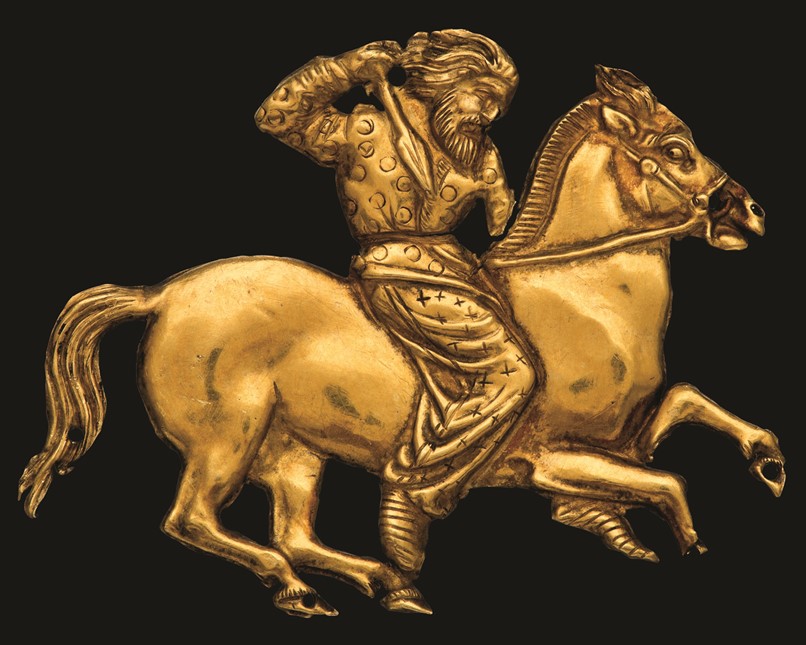
According to the British Museum, the Scythians, an ancient Siberian warrior culture, were the first to ride horses into battle. They were a nomadic people that became experts in the use of the bow while riding horseback. They were also adept with maces, lances, swords, and battle axes, and were heavily protected by their scale armor and helmets. “Because of their collective ability to stay on the move, and with nimble cavalry, Herodotus says the Scythians were "invincible and impossible to approach" (Histories, 4.46). With such weapons and tactical ability, it is not surprising different nations often solicited Scythian military services." *
"For Greeks who had never before seen a person on horseback, the first sight of these riders racing toward them while firing volleys of arrows must have been truly terrifying. Some modern scholars wonder if early sightings of strangers on horseback might have inspired the Greek myths about the legendary half-man, half-horse beings called centaurs." *
Breeds of Horses Used in Warfare
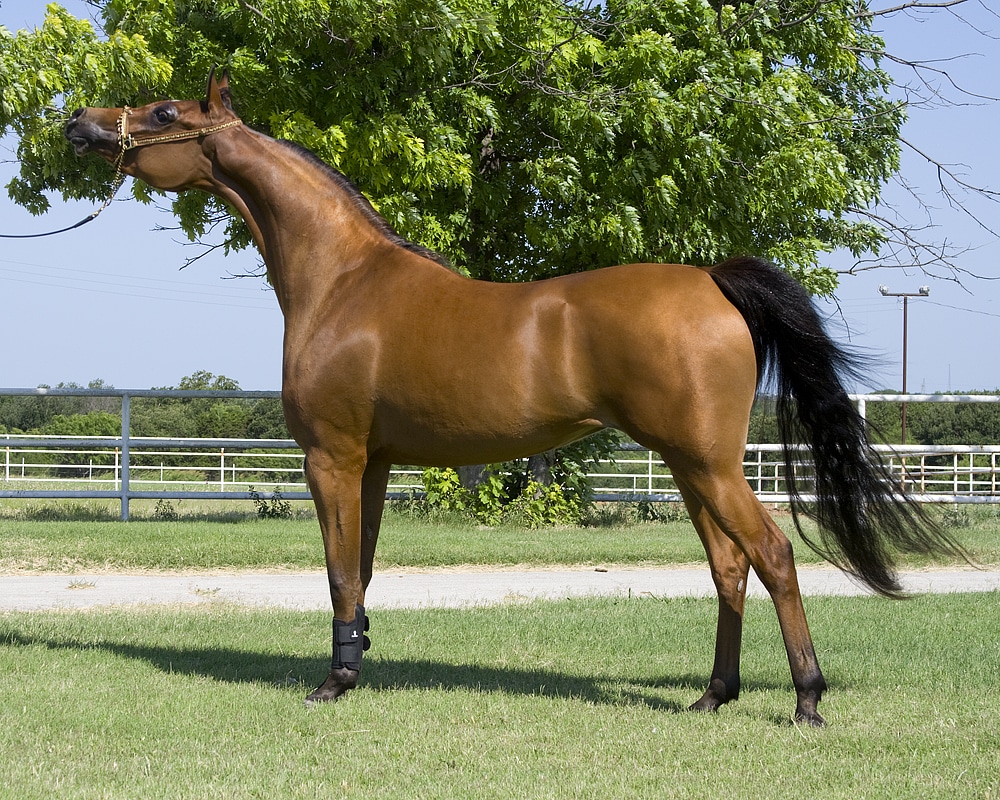
Various types of horses were chosen for different uses. Light-weight animals like the Arabian or Akhal-Teke were known for speed, agility, and endurance. Riders used light spears, bows, javelins, and in later years, rifles. The light-weight breeds were used with chariots that included a driver and warrior and were also used as a light cavalry horse.
Medium-weight horses were the workhorses, used to pull heavy supply wagons or larger chariots with more than two riders. Medium weight horses could carry an armored cavalry rider and were used to move cannons on the battlefield. In the middle ages, these horses were called destriers, and likely looked much like a Baroque horse.
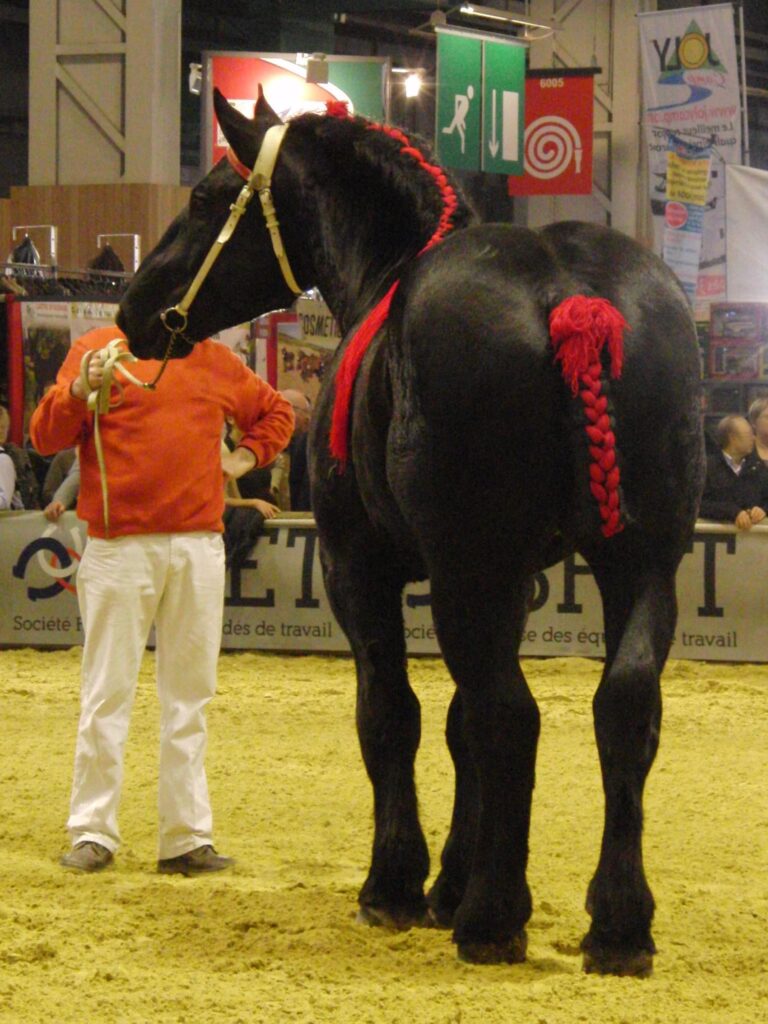
The larger heavy-weight horses found their place in the European middle ages and we know them today as draught horses. These muscled breeds could pull giant supply loads and were known for their calm demeanor under pressure. It is likely the Percheron, agile and maneuverable in battle, is a good example of this sort of horse.
"Whether horses were trained to pull chariots, to be ridden as light or heavy cavalry, or to carry the armoured knight, much training was required to overcome the horse's natural instinct to flee from noise, the smell of blood, and the confusion of combat. They also learned to accept any sudden or unusual movements of humans while using a weapon or avoiding one. Horses used in close combat may have been taught, or at least permitted, to kick, strike, and even bite, thus becoming weapons themselves for the warriors they carried." *


[…] necessity; it was a survival tool. It goes without saying that battle horses were invaluable to the warriors of history, but they were also vital to the founding of the United States we know and […]